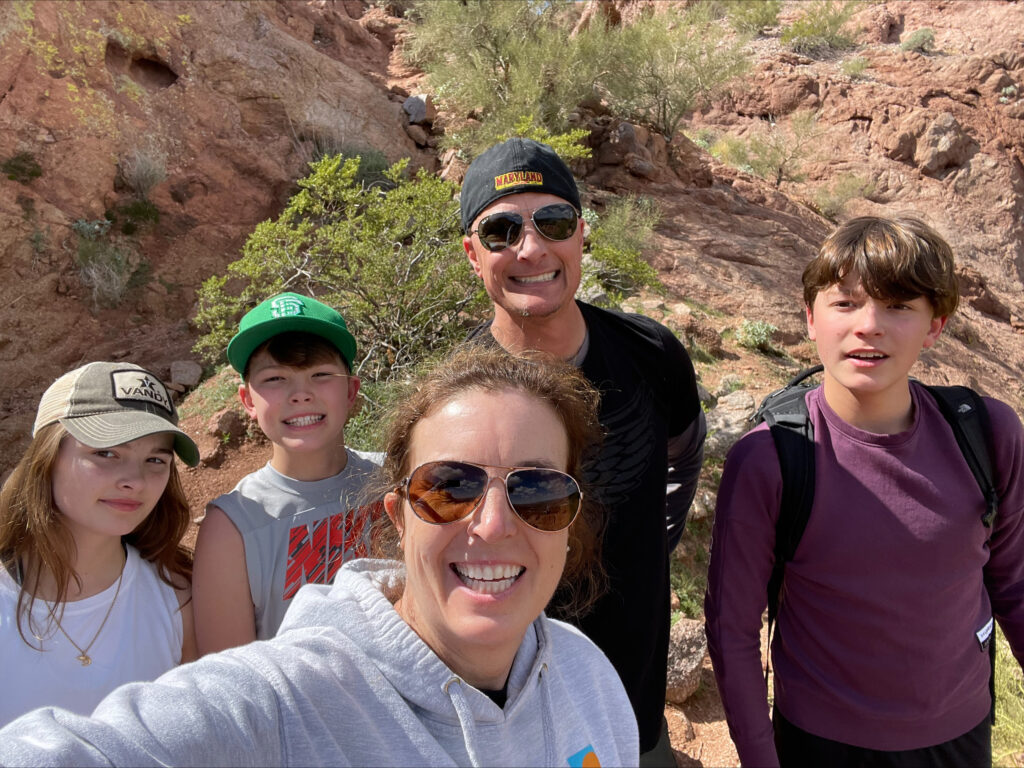

Dr. Seth Norrholm, Ph.D.
Behavioral Neuroscientist | United States Air Force Academy | Colorado Springs, CO
Each month, we are profiling one of our Dandy-Walker Alliance Scientific and Medical Advisory Board members. For April, our Executive Director Chris Rogers sat down with Dr. Seth Norrholm, Ph.D., from the United States Air Force Academy. Dr. Norrholm is a behavioral neuroscientist focusing on anxiety, fear, and PTSD.
This interview has been edited for brevity and clarity.
Dr. Norrholm, thank you for joining me today. Why don’t you start out by telling me a little bit about yourself. What does your work entail?
I am a neuroscientist by training, currently serving a one-year distinguished visiting professorship at the United States Air Force Academy in Colorado Springs where I’m teaching cadets about abnormal psychology and stress and health.
I’ll be back in Detroit in May to return to my full-time position as the Director of the Neuroscience Center for Anxiety, Stress, and Trauma at Wayne State University in their school of medicine. There, I am an associate professor covering trauma and the brain, with an emphasis on PTSD and the other illnesses that tend to come along with it like depression, anxiety disorders, and substance use.
I’ve been at Wayne State since 2019; before that I was at Emory University in Atlanta for fifteen years and worked at the Atlanta VA. So, I’ve been working with individuals with PTSD and related disorders for over 20 years now.
What made you interested in behavioral neurosciences?
My father was a disabled veteran. He was in the Navy for a number of years as an engineer on submarines, so I grew up in a military family. When I was about 12 or 13 years old, my dad was diagnosed with a brain tumor. The way it was explained to me at the time, he was having problems with his vision, and parts of his visual field were missing. So, he went to the eye doctor, and from my adolescent perspective, he was going to get his eyes checked and may come out of there with glasses. But he actually had this tumor, which was in the part of the brain where the optic nerves go toward your visual cortex, and so that was affecting his vision.
For me, the idea of a visual problem having a deeper brain issue behind it was fascinating, and so that really sparked my interest in neuroscience. Plus, he was a veteran, and growing up in a military family I’ve always had an affinity for servicemembers and veterans. I kind of merged those two together in my career path.
I was unfortunately what they call med boarded, or excluded from service, due to some pretty benign medical conditions. So, it kind of became a career objective of mine to serve in the best way that I could, which was to help those who have served our country. That’s what led me to the VA starting in 2003, all the way to my current position here at the Air Force Academy. It’s been a joining of interests of mine, from a personal and professional perspective.
What is your favorite aspect of your work?
I’d have to say it’s interacting with the people. Right now, I’m teaching cadets about stress and resilience, and hopefully staving off anxiety and depression and PTSD. Most of the work in my career has been after the fact, after people have been traumatized. When you get to the level of service members and first responders and veterans, you’re already looking at people who have, what you could say for all intents and purposes, is a damaged brain so to speak. And what I’m able to do now is to teach about these things ahead of time and to build resilience so this group of 4,000 cadets who are yet to be deployed have a greater sense of strength and foundation to face the stressors they’re ultimately going to face. So, I think it’s interacting with the people.
In my civilian work back in Detroit, I interact with people who have undergone trauma and again trying to treat the PTSD as best as we can but also see if we can identify risk factors. In a place like Detroit, there are social determinants of mental health as well as the potential biological or physical vulnerabilities.
What made you want to get involved with the Dandy-Walker Alliance?
I’ve had a long interest in early life, shall we say, adversity and challenges. That’s anything from an upbringing where you’re faced with maltreatment or abuse, but also biological and physiological illnesses and events that can happen to people. When [Dandy-Walker Alliance Founder and President] Eric Cole approached me about serving on the Board, it was – pardon the pun – a no-brainer for me, because I had such a strong affinity for helping those with derived illnesses, and of course, my close relationship with Eric played an important role as well.
Outside of work, what do you like to do in your free time?
I really like the outdoors, so being in Colorado for the past year has been great in terms of the hiking and just the opportunities out here are pretty overwhelming at times in terms of what there is to do. I’ve been running for over 30 years, so I like to do that. I like to practice what I preach in terms of how you can guard yourself stress and adversity, and exercise is something that’s been shown over and over to have positive effects. I try to get out and run as often as I can.
My wife and I have triplets that are 14 so they take up a lot of my time and interests, and of course that’s extremely rewarding. We’re also animal lovers, so we have three dogs, two cats, and a leopard gecko in our house right now.

Thank you to Dr. Norrholm for his service on our Scientific and Medical Advisory Board, and for the work he is doing to improve mental health outcomes in the military and civilian communities. Stay tuned for another Board member profile in our next issue!


